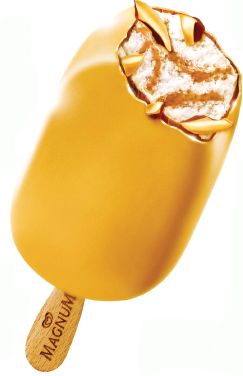Emerging markets: The influence of Twitter
Henry Manampiring
Lowe
During US President Obama's visit to Indonesia in November 2010, the Indonesian information minister Tifatul Sembiring – who always refuses to shake hands with a member of the opposite sex to whom he is not related – was seen on video footage eagerly grasping Michelle Obama's hands.
Sembiring denied any voluntary handshake, tweeting that “The First Lady's hands were pushed against mine… resulting in involuntary contact”. Overnight, Indonesian tweeps flooded Twitter with sarcasm and parodies, blowing up the incident, which became known as ‘Handshake Gate’.
Despite Facebook's superior user base, in Indonesia the real action is on Twitter. While Indonesians still check out their ex's new girlfriend on Facebook, conversations that have real effect on real life, such as politicians' indiscretions, are exposed and debated on Twitter. It is not easy to rule a country that has been dubbed ‘the Twitter capital of Asia’.
Twitter growth in Indonesia is remarkable. Comscore ranks Indonesia as having the highest Twitter penetration: 20.8% of total internet users, which were estimated at 30 million in November 2009 (Source: Internet World Stats), while the US has only 11.9% penetration.
There are an estimated 20,000 internet cafes scattered around the country, but it is internet-enabled mobile phones that have driven rocketing internet penetration among the Indonesian masses. Indonesia experienced what is called leapfrogging, from TV straight to mobile internet, bypassing PCs. Personal computers are not easily affordable to Indonesians, but mobile phones are.
The combined effect of Twitter and cheap mobile internet has provided Indonesians with the opportunity to communicate their point of view to anyone who cares to listen. And Twitter has naturally attracted marketers who wish to communicate their brand message.
Given the ever-increasing media cost, with more TV channels adding to the clutter, and competition coming from cable TV, traditional media is being put under pressure. Granted, to reach 237 million people in a 13,000 island archipelago, the 30-second TV spot may still be the most cost-effective model. But more and more young, educated and mid-to-high social class consumers are shifting their attention to mobile. These are the kind of people who are generally more receptive to new innovations, and are influencers.
Twitter behaviour in Indonesia varies: most tweet about their day, much like Facebook status updates, which appeal only to close friends. These are people who use Twitter to strengthen bonds among existing friendships. But the tweeps that gather a large follower base are more interesting. Many TV soap and film stars immediately gain a mass following when they open a Twitter account, easily gathering 50,000 to 500,000 followers. The most popular is pop star Sherina Munaf, who has 859,000 followers.
In the absence of a ‘script’, some stars' onscreen personalities don't translate very well to Twitter. The most interesting are those who engage their followers with provoking or entertaining posts.
Aside from celebrities, Twitter provides an opportunity for mere mortals to become famous as well. A number of ordinary people have achieved semi-celebrity status (with more than 10,000 followers) because their posts are considered enlightening, if not entertaining. These people are often more engaging and interesting, because they gain followers through ‘pure content’, rather than transferring stardom from the real world. In many cases, their influence can reach out to diverse areas of interest, from politics, cultures, religion and many other social issues.
These ‘celebritwits’, with influence over tens and even hundreds of thousands of followers, present marketers with an opportunity to enter the new frontier of media through the age-old recipe: celebrity endorsement. Pay a certain sum of money to these big Twitter names and enjoy your brand message being broadcast to their followers at a relatively cheap cost-per-contact. The use of celebritwits ranges from vulgar paid tweets with explicit messages (‘OMG! Brand X ready-to-drink is really refreshing!’) to slightly more subtle strategies. Ice lolly brand Magnum is an example of the latter.
Magnum was being relaunched at the end of 2010 in Indonesia, following Unilever's global campaign. Unilever engaged on Twitter using a twibbon – a web application that overlays a small logo over the user's Twitter avatar. Magnum's twibbon is a chocolate melt (to advertise its Belgian chocolate ingredient) that is positioned at the top of a Twitter avatar. What is unique is how the chocolate melt gradually flows down, covering the avatar almost completely with chocolate.
The twibbon was initially used (and endorsed) by celebritwits, prompting their followers to question what this was all about. Along with the Magnum twibbon, the subject of Belgian chocolate was also raised, creating curiosity across Twitter in Indonesia.The twibbon was further adopted by the celebritwits’ followers, thanks to its novel ‘melting progression’ feature. But this was only the start.
It so happened that near the product launch time, Mount Merapi in Java erupted, forcing thousands of people to flee from their homes. Houses were destroyed by hot volcanic winds, paddy-fields were covered with ash and mud, and many livelihoods were lost.
In a quick response to this, Magnum's marketing team communicated that for every twibbon adopted, Unilever would donate Rp 500 (around 5.5 US cents) to help the refugees.The additional social cause helped to boost the twibbon's popularity.
Whether by coincidence or by design, the initial low distribution of the product actually helped to create the hype on Twitter. As consumers started to look for Magnum and failed, they complained on Twitter, further building up brand awareness and interest. What's more, consumers who had looked for Magnum and found it would willingly tweet about their success.
The campaign's success was not driven solely by Twitter, however. Unilever also pumped money into traditional media, including TV and cinema, to ensure brand awareness. But the dynamics of the social media conversation created through celebritwits, the unique twibbon and the interesting conversations they generated, are undeniably an important contribution to Magnum's successful launch in Indonesia.
Although Magnum's success may exemplify the use of celebritwits, Indonesian marketers who want to unleash the full potential of Twitter must be able to look beyond celebrity endorsement. The same potential problems with celebrity endorsement in real-life also apply on Twitter, such as personalities being overused by too many brands, attempts to endorse by stealth and the backlash of followers' cynicism. Twitter is like a giant cocktail party, and people are already engaged in much more interesting topics than your latest detergent. Common sense still applies when you start crashing into the party and shouting about your product. This leads us to two simple principles for anyone wanting to join the social media platform.

Magnum used local ‘celebritwits’ to publicise its launch in Indonesia
- Respect. As clichéd as it sounds, the word now yields more power than ever with your audience. With traditional media, any communication that patronises or insults consumers only results in loss of sales and negative comments. But in social media, consumers can instantly broadcast their protests and complaints, which will get immediately retweeted to others (and you suffer tarnished brand image on top of lost sales). Where control diminishes, respect must increase. Avoid condescending, intrusive messages, or activating a tough defence in the face of criticism.
- Once we learn to stop seeing our audience as a ‘target’ (which implies oneway messaging), the next principle is to get the content right. If traditional marketers think channel-zapping is bad in the TV world, think of the ‘unfollow’ and ‘block’ features on Twitter.
The computer brand Acer's Twitter account in Indonesia is remarkable for having continuous presence, and also chats around real-life issues (‘good luck to all students having exams this week’ is a sample tweet). The account becomes a ‘person’, who lives in the real world, rather than being preoccupied with its own products/services.
While TV is a ‘broadcast’ medium, Twitter is a conversation forum. If your brand wants to be successful at conversation, obey the rules of healthy conversation, and you will be fine.
http://www.warc.com/Content/ContentViewer.aspx?ID=4e2b5241-8e0a-4221-9c5c-966cc9ef2750&q=The+influence+of+Twitter&MasterContentRef=4e2b5241-8e0a-4221-9c5c-966cc9ef2750

No comments:
Post a Comment